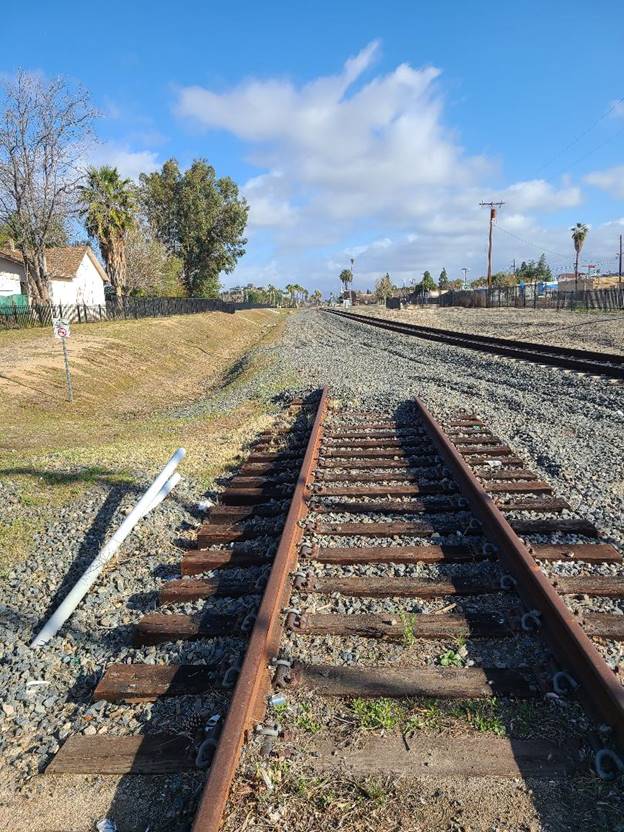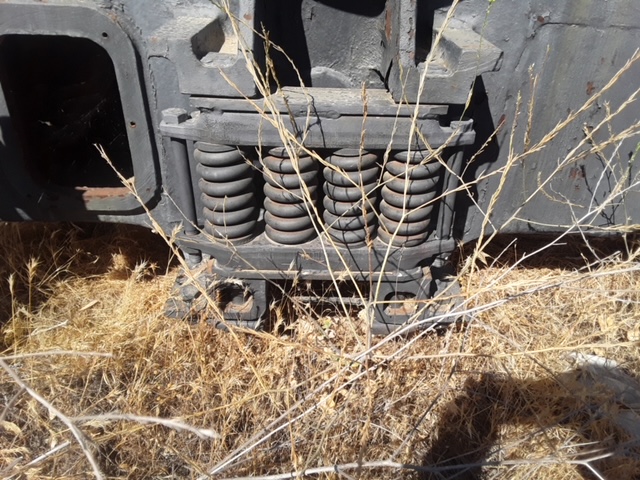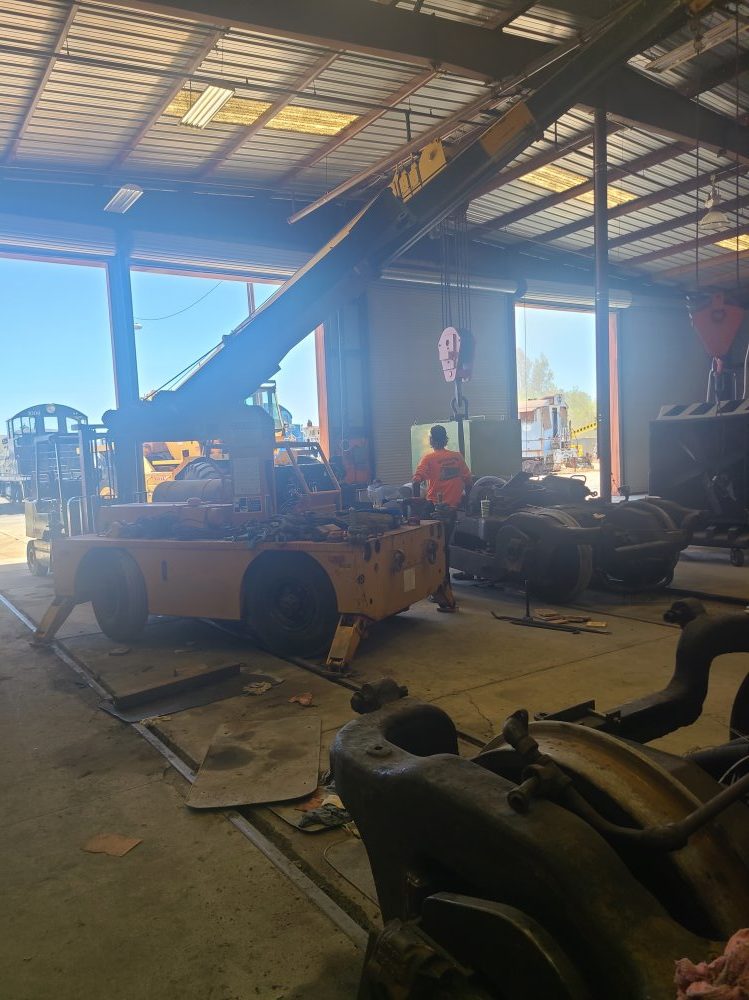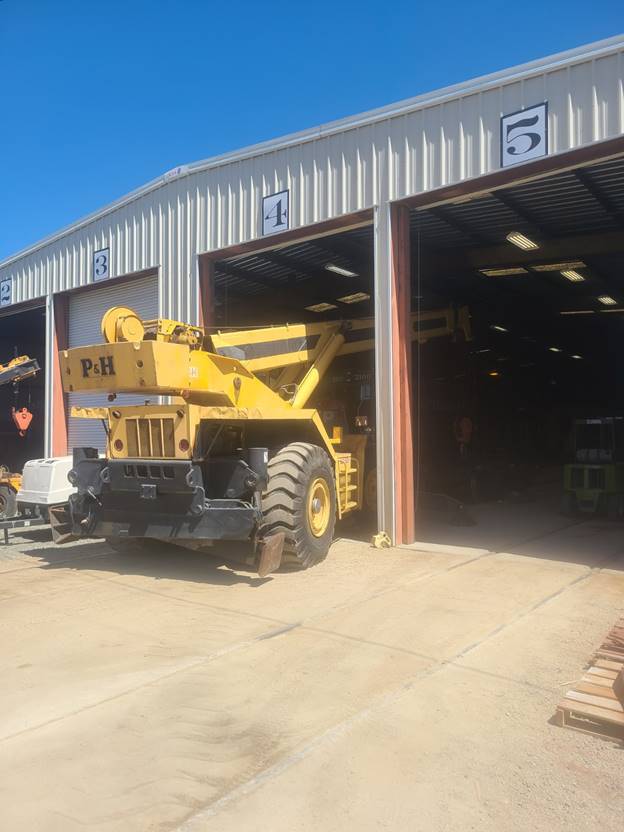Diesel Service Report, July 3, 2022
SF5704 Restoration
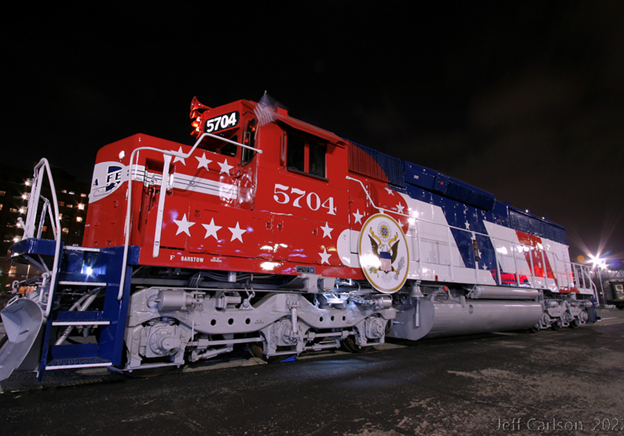 As has been well documented on social media over the past few months, SF5704 has been reconfigured and repainted back to its 1976 Bicentennial configuration. Two weeks ago, it was displayed at the Kansas City Santa Fe Historical Society convention in Kansas City. Below is a night shot that I will attribute to Stephen Priest or one of his friends. Notice that the locomotive lights are all turned on. For the picture, they wired batteries to the lights to make them light up.
As has been well documented on social media over the past few months, SF5704 has been reconfigured and repainted back to its 1976 Bicentennial configuration. Two weeks ago, it was displayed at the Kansas City Santa Fe Historical Society convention in Kansas City. Below is a night shot that I will attribute to Stephen Priest or one of his friends. Notice that the locomotive lights are all turned on. For the picture, they wired batteries to the lights to make them light up.
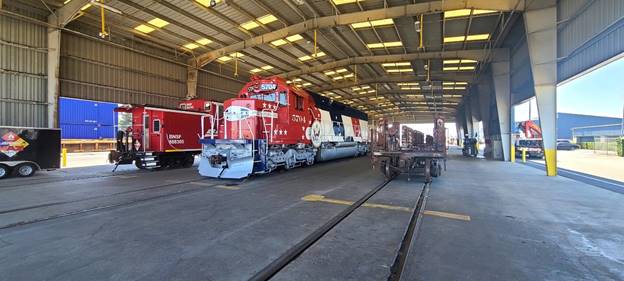 Shortly after the convention was over, BNSF moved the locomotive to Los Angeles where it is presently stored in a very secure area. It is under a roof and is in an area that no public has access to. Other collectible BNSF rolling stock is also stored there for safety. The locomotive will stay there until we are ready for it to be moved to the museum.
Shortly after the convention was over, BNSF moved the locomotive to Los Angeles where it is presently stored in a very secure area. It is under a roof and is in an area that no public has access to. Other collectible BNSF rolling stock is also stored there for safety. The locomotive will stay there until we are ready for it to be moved to the museum.
For the past few years, continuous questions have been raised about the track connection in Perris. Rumors were that the switch was missing, track was missing, etc. This write up is my understanding of what the problem is. This does not reflect a statement from the museum, its just my view from what I gather.
First, the switch that will connect the museum’s track to the Metrolink track in Perris is installed and has been there for many years. What is missing is about 400 feet of track that goes from the existing switch, south to the museum’s track at the grade crossing at 7th street in Perris.
This next picture was taken a few months ago looking north from 7th street. In the far distance, the switch area can just barely be seen. The track on the right is the Metrolink track.
Please notice that the museum track is pointing at a sharp angle to the Metrolink track. That means that when the track connection is made, a curve must be made in the track to provide clearance between the museum’s track and Metrolink’s track.
The missing track section was installed for a short while in 2016 for a special dedication ceremony in Perris. Shortly after that event, that “temporary” track was removed. The exact reason for the removal is attributed to various rumors but the result was that the track was removed.
That track consisted of portable panel tracks that are presently stored at the east end of the Metrolink track in Perris, next to the East Perris public park and ride area.
This is a 2016 picture taken from Google Maps, showing the temporary track as it existed for a short time.
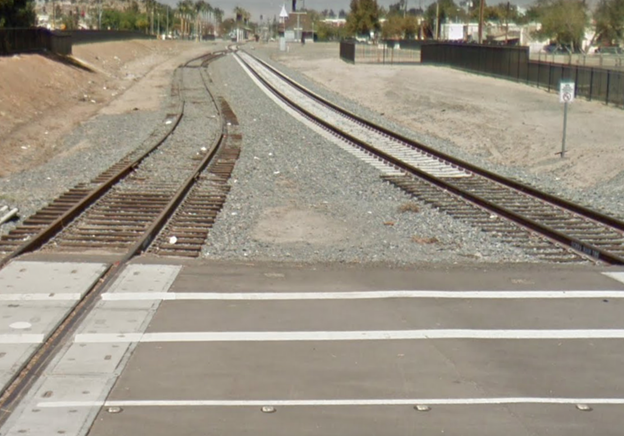
There are two separate projects involved with this issue. First, the above track in 2016 was deemed to be a “temporary” track. There are issues with the crossing angle at 7th street which causes need for the sharp curve, and there are issues with grade crossing signals. As a temporary track, it may be possible just as it was in 2016.
However, the long-term desired solution is to have a permanent track connection rather than temporary one. To achieve that, proper engineering designs must be completed and approved. That design will consider the required spacing between the museum and Metrolink tracks and the need for proper grade crossing signals and the integration of those signals into the Metrolink signals. Both tracks cross 7th street adjacent to each other so if one set of signals is triggered, both sets of signals must be activated.
To further complicate the timing of the problems, there are several pieces of rolling stock waiting to come to the museum and their movements must be coordinated for hopefully a single move.
In addition to SF5704 coming to the museum, there are two other locomotives and some additional passenger cars waiting for the missing track to be installed. All of this coordination is a big job with lots of implications such as insurance, timing of track installation, car brake systems properly certified, correct couplers on locomotives, and on and on. Hank Winn, with help from others, is trying very hard to get this all coordinated. Hopefully he can make it happen soon but at this point there is no guarantee of anything. It’s a major logistics problem to solve and several people are working on it with him.
Again, that is my personal understanding of the situation.
SF560 Fairbanks Morse Restoration
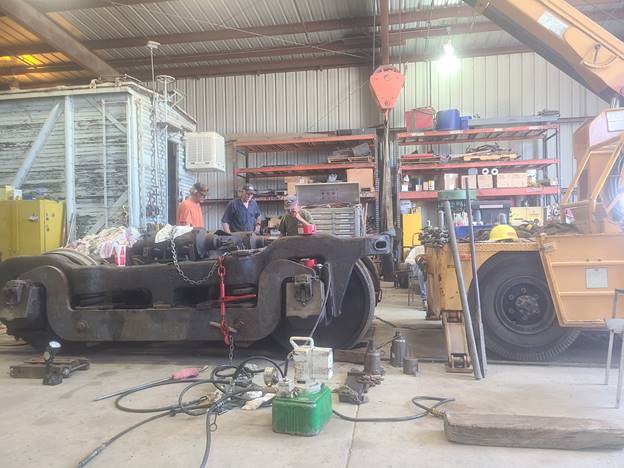
As reported previously, the trucks are out from under the locomotive. They have been cleaned with our new pressure washer and subsequent inspections revealed issues with one journal box that was jammed tight in the truck frame pedestal. To remove that journal box, hydraulic jacks were required.
This shows the journal box being jacked downward while the equalizing bars are chained in place to keep them from falling off when the journal box is finally removed.
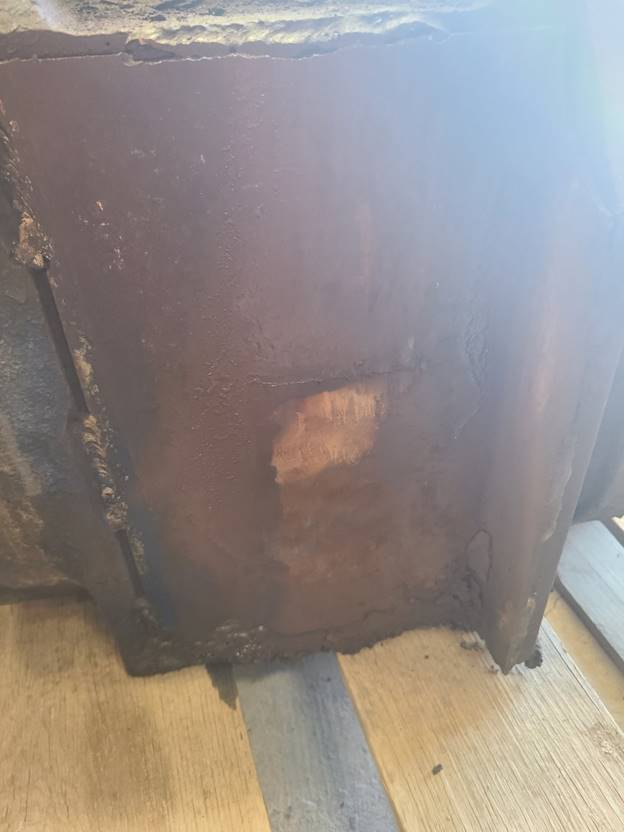
After the journal box was removed, it was obvious that rust behind the wear plates on the journal box had expanded the plate to the point that they swelled up which caused the jamming. It’s clear where the wear plate was contacting the pedestal wear plate. Note the bright orange spot on the journal box wear plate. If the wear area was normal, the whole area would be orange from contacting the pedestal wear plates.
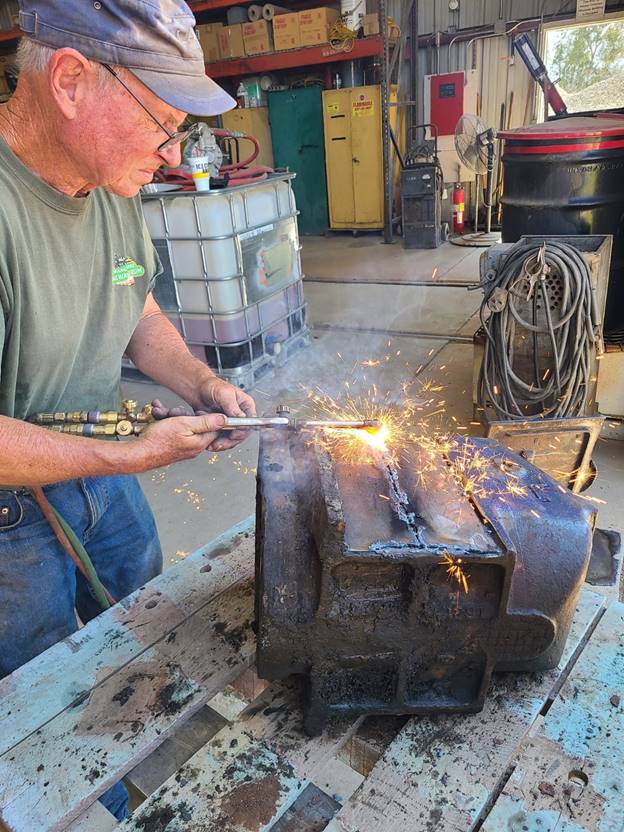
We tried grinding away the high spots on the journal box wear plates but no matter how much we ground away it was never enough. One attempt was made to reinstall the journal box with the ground down wear plates but there was still a major interference. The journal box was again removed, and Carl used a cutting torch to split the wear plates in half. Once they were cut loose, the halves were pried off the journal box.
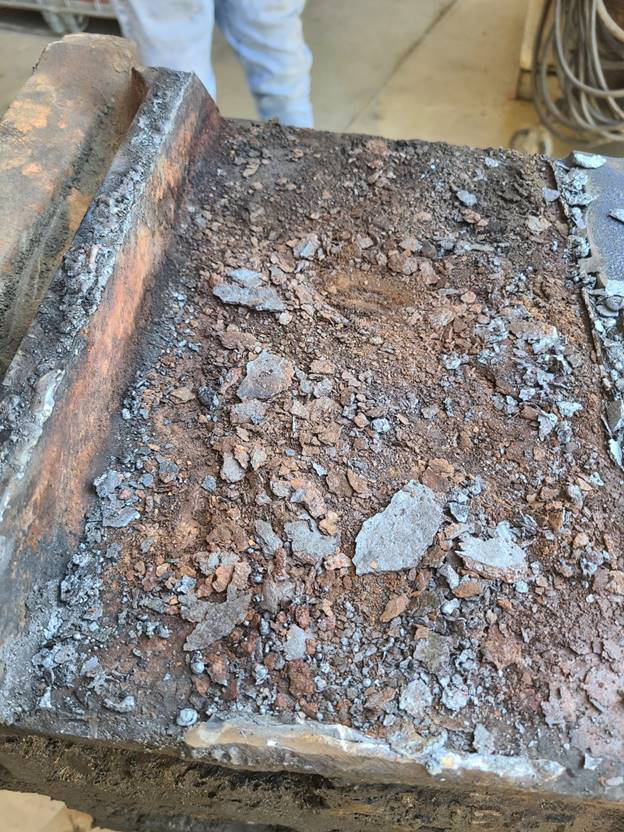
Then it became obvious how much rust was captured behind the wear plates which caused them to bulge out.
After the rust was removed, Carl welded in new wear plates and reinstalled the journal box. It fit perfect this time.
But to remove a journal box, the traction motor and wheel set, commonly called a combo, must be removed from the truck. It’s a lot of work to do that and requires some pretty heavy-duty equipment. In the process of removing the combo, a spring pack that connects the nose of the traction motor to the truck frame, must also be removed.
That spring pack has four springs in it. What we found was that one of the spring packs had broken three of its four springs. Fortunately, we had spare spring packs from trucks donated to us by Eric and Bennett Levin 20 years ago for use in our SP1006 refurbishment effort.
Reinstalling the combo and the nose snubber spring pack is not easy. It took all day to install two spring packs using Carl’s large crane and his deck crane.
Once the combo was back in place, the job was over, for this truck at least. Now we will inspect the second truck to see what surprises we find there. A quick look at the snubber spring packs did not result in seeing any broken ones but we still need to prove that the journal boxes are free moving in the truck pedestals.
A few months ago, we acquired a tote full of Diesel fuel. That’s about 250 gallons or so. About the same time, we had drained the locomotive fuel tank of its Diesel fuel so that we could remove the sight glasses for cleaning and installation of new gaskets. Once the sight glass refurbishment was complete, we were ready to pump the tote of Diesel fuel into the locomotive. But we didn’t have an easy way to make that transfer.
A spare locomotive fuel pump was plumbed with hoses to make a transfer pump. The fuel in the tote was pumped into the locomotive tank and the lower sight glass now shows fuel almost to the top of that sight glass. As a guess we may have pumped in about 200 gallons or more.

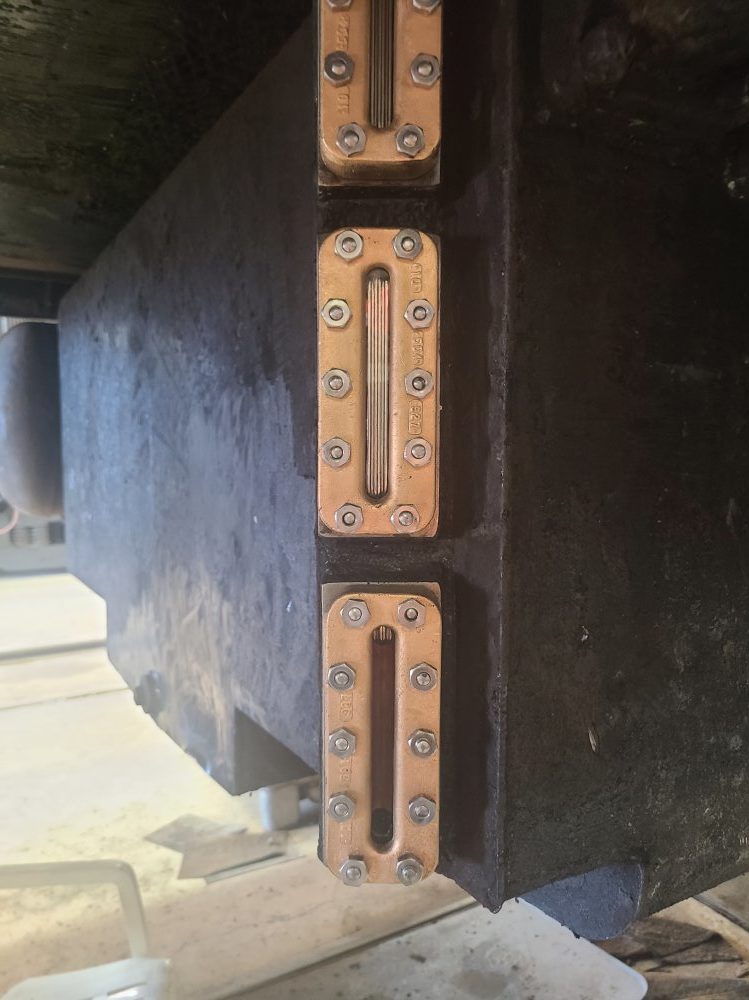 This (left) is the fuel transfer pump that we can use in the future.
This (left) is the fuel transfer pump that we can use in the future.
This (right) shows the bottom sight glass full almost to the top.
In the past, the injection fuel pumps in our Fairbanks Morse Diesel locomotive had a habit of freezing up for some reason. We replaced them and found that the replacements also stated to get stuck. With the new fuel in the fuel tank, the fuel pump will be turned on and the engine turned over so that fresh fuel reaches the plungers in the pumps. Hopefully this forestalls any stuck pump issues. But we won’t really know until we have the trucks back under the locomotive and can restart the engine.
Tom Platten continues to spend hours every week under the locomotive removing thick layers of dirt. That is a job that must be completed before we put the trucks back under the locomotive. And most likely we will have to wipe down the whole area with a solvent to remove any residual grease or oil before painting.
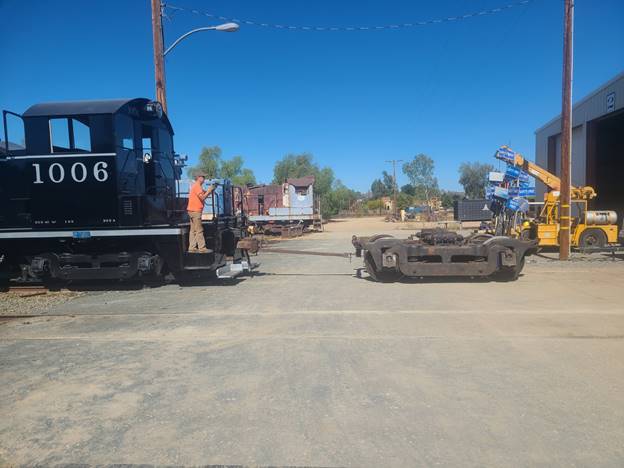 The first truck has now been moved to Track 4 for the wheel turning work. SP1006 was used to move the truck.
The first truck has now been moved to Track 4 for the wheel turning work. SP1006 was used to move the truck.
The next effort on SF560 will be Carl’s work using the museum’s recently purchased portable Iron Horse wheel lathe. But to do that work, he uses a special modified steel plate to hold the lathe and clamp the truck tightly while turning the wheels with a welder. In this case, the wheel flanges are too tall. They need to be cut down to acceptable limits but without removing any tread material.
The treads are already too thin so there is no room for removal of any more material. The wheel edge opposite the flange has rolled over large burrs that need to be removed. Carl will remove those with the lathe plus touch up any area that can be helped by removing a little material. All of this work will be done on track 4 in Carbarn 7. There is no concrete between the rails on that track. That leaves more room to work with the portable lathe and its large mounting plate.
SP1006
John Salvini replaced seals in the load regulator. These seals are notorious for leaking. Fortunately, even though the regulators are 60 years old, the seals for them can still be purchased. He started the engine to check for leaks with the new seals and everything looked fine. But his experienced ear seemed to hear something akin to a misadjusted valve. Maybe it was an echo in the Carbarn. We will need to keep an eye on it just in case.
The Diesel Service Crew
A special thanks to the whole crew that have pitched in for a very long time.
- Tom Platten
- Frank Kunsaitis
- Carl Pickus
- Doug Newberry
- Core Wylde
- Tim Johnson
- Bob Bray
- John Salvini
- Richard Berk
Thanks guys, what a tremendous effort.
– Dave Althaus

